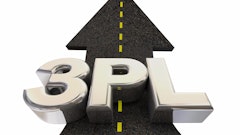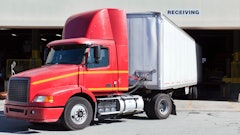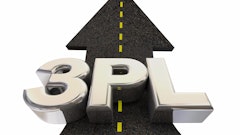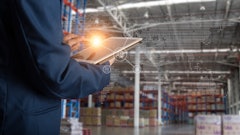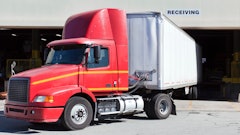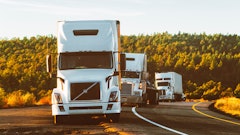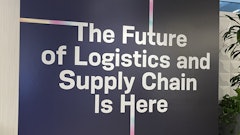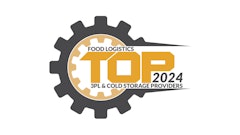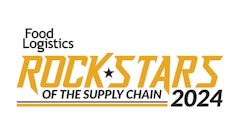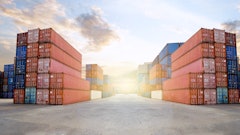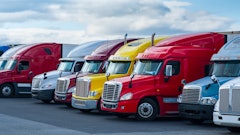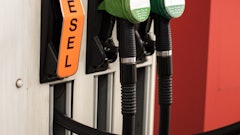
From enhancing visibility, building resiliency and mitigating risk to leveraging smart technologies and automated software, a digital supply chain means different things to different companies.
Yet, digitization itself presents the same benefits across the board in moving temperature-controlled foods in a safe and efficient manner.
Marina Mayer, Editor-in-Chief of Food Logistics and Supply & Demand Chain Executive, talks exclusively with Jeff Vaughn, chief commercial officer, Trailer Bridge, about why it’s critical for a cold supply chain to develop strong 3PL and carrier partnerships who have technology that can adapt to shifts in the industry landscape and ultimately implement into a digital supply chain.
CLICK HERE to read the article in full.
Food Logistics: What is a digital supply chain? What does it mean for you/the cold food chain?
Jeff Vaughn: A digital supply chain is an integration of internal systems and data with external operational information helping streamlining efficiencies. It gives customers the ability to transport their temperature-controlled products in a safer and more efficient manner of delivering a high-quality product while driving cost efficiency.
Food Logistics: Describe some technologies and solutions defining the future of digital supply chains.
Vaughn: Cloud-based solutions focused on inventory planning and optimization are critical to many cold chain shippers helping to reduce inventory by providing route optimization to ensure on-time delivery to meet the needs of the consumer. A key piece of technology for any cold supply chain shipper is to have strong temperature-monitoring systems with all their assets from trucking providers to cold storage. Although this is not a new piece of tech, it is a critical piece of the supply chain and one that continues to evolve and improve. This tech allows for increased visibility, compliance with product requirements, and the ability to take swift preventive actions should there be a change.
Food Logistics: Where to start? How do companies start the journey toward a more digital supply chain? Outline some good first steps.
Vaughn: First, outline and identify your current supply chain with all stakeholders to identify key areas of decision making and operational action items. Recognize areas where there is a manual entry and tedious operations and define business objectives beyond operational efficiencies. Understanding your current processes and being able to clearly communicate that to a potential partner ensure you get the best solution in the end. Look for 3PL partners who can offer technology solutions where you can partner and integrate. Attending digital supply chain and technology conference and events to network and identify key partners is helpful in this process.
Food Logistics: What sectors (i.e., agriculture, frozen foods, etc.) are more impacted/affected by digitalization than others and why?
Vaughn: Our largest sector of the cold supply chain is frozen foods and fresh produce market segments. We provide both domestic, cross border and ocean services to frozen and fresh produce shippers throughout North America and the Caribbean. These sectors are more impacted by a digital supply chain by reducing time to market, maximizing production and inventories, and reducing cost. These sensitive products must be handled with care throughout their journey – from storage and transit to the final mile to shelf life. This is why it is so critical to have a strong digital supply chain to ensure product care and ultimately customer satisfaction.
CLICK HERE to read the "Breaking Down the Digital Supply Chain" article in full.
Food Logistics: From food production to the retail and/or foodservice outlet, how does a digital supply chain transform the way food is moved from Point A to Point B? This could also entail fleet, warehousing etc.
Vaughn: A digital supply chain helps transform storage and warehousing by optimizing inventories and decisions related to sales at the retail storefront. Maintaining the correct inventories helps reduce warehousing and demurrage cost with critical temperature-controlled assets. It is also critical to be able to make fast decisions to optimize routes to the foodservice and retail chains while giving the most cost-effective mode of transport such as over the road, LTL, or intermodal services.
Food Logistics: Describe some other trends and challenges with regards to digital supply chains.
Vaughn: Due to the continued uncertain financial environment, building a more robust and resilient supply chain is a necessity to grow in this economy. I believe another challenge is the ability to produce benchmarking and KPIs to deliver a strong ROI for your digital supply chain technology.
Food Logistics: What are some things not addressed above that may be pertinent to our readers?
Vaughn: We are seeing more and more logistics and assets-based companies go out of business. It is critical for a cold supply chain to develop strong 3PL and carrier partnerships who have technology that can adapt to shifts in the industry landscape and ultimately implement into your digital supply chain.
CLICK HERE to read the article in full.








